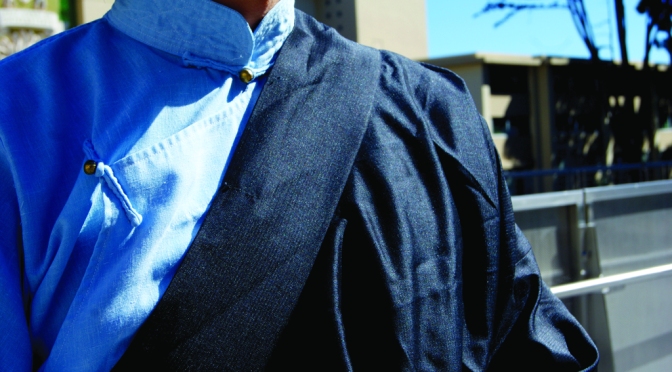Emily Pinnell-Stewart
Staff Writer
As San Francisco’s annual Chinese New Year parade approaches, the city and it’s occupants excitedly prepare for the upcoming festivities. The Lunar New Year refers to the celebrations centered around the restart of the Lunar calendar. Typically, celebrations start around the eve of the New Year and can last as long as an entire month. Most Americans have some understanding of the typical fashion and style around the New Year, but there is still confusion about the cultural significance of these garments. In hopes of bringing education to the topic, I spoke to a few students on campus to get their perspective.
USF Senate’s current International Student Representative, Lichao Zhang, believes that it’s very important to create discussion between cultures, and that the New Year is a great time to start. “We bring important values to our community when we show our identity,” he said of participating in New Year celebrations while in the U.S. He described the two most important colors of the New Year in China, red and gold, as symbols of happiness, harmony, and prosperity; during the celebrations, people will wear these colors in hopes of bringing joy and wealth to loved ones. Families will gather for large dinners, and children are often given red envelopes filled with money and well-wishes. Traditional Chinese clothing is also worn during this time, such as Qipao or Cheongsam for women. For men, the traditional dress is referred to as “The Dress of Tang”, after the Tang Dynasty, on which centered symmetrical buttons symbolize the power of neutrality.
Freshman business major Ellen Li, another international Chinese student, remembers receiving envelopes as a child and how fun the celebrations were. Though she never wears traditional clothing herself for the New Year, she is glad to see foreigners interested in the style. “I feel happy when I see Americans celebrating Chinese New Year, because to me that means they appreciate Chinese culture. But I hope they will learn more.” However, we shouldn’t just learn more about Chinese culture, but about other cultures that celebrate the Lunar New Year as well. Marguerette Chang, a a freshman biology major from Singapore, spoke of the similarities between the festival celebrations in Singapore and China. “It starts off by cleaning the house, to get rid of bad luck, I guess. Everyone buys new clothes and wears them during the New Year.” When I asked her about her clothes, she told me that it’s usually casual and that she mostly tries to wear something red or gold. “I haven’t worn a Qipao since I was little.”
Some cultures differ greatly when it comes to clothing and celebrations of the New Year. In Tibet, “we have something called the Realm of The Animals, and also have our own corresponding mineral titles,” said Tenzin Jamyang, a Tibetan student pursuing a Masters of Science in Environmental Management. For Tibet, this year celebrates 2,142 years of the calendar and it is the year of the “Wood Sheep,” similar to China’s Year of the Goat. He spoke of the traditional dress that people wear around the Tibetan New Year, which falls around the same time as the Chinese New Year, called the Chupa or Chuba. Due to Tibet’s cold climate, the focus of the garment is more on comfort than color and style. It is common to wear robes, which are often in dark color and mainly made from wool. Women often wear a similar garment to men, however, married women will wear a multicolored apron around their waists to symbolize their status. The Tibetan New Year is a very spiritual holiday, thus a majority of the celebrations include prayer and appreciation of deities, something he recommends that a foreigner ponder when considering celebrating the New Year.
Traditional garments can also represent hardships, such as when Jamyang described growing up in India due to the Tibetans’ exile in 1959. “I have not seen Tibet with my own eyes, but I am Tibetan. It’s very important to preserve one’s culture and to show solidarity.” Though it differs how the New Year is celebrated, the students I spoke with all loved and embraced their cultures. They agreed that Americans should participate and learn about the Lunar New Year and it’s celebrations, but that it’s important to know the meaning behind the fun, and recognize the people whose lives can be shaped by how we, as foreigners, treat their culture.
An understanding of the cultures that are represented by the Lunar New Year is something necessary for improving both the USF and global community. These colors and styles have significant meaning in their respective cultures, and they are not a costume. “This dress is not just a dress,” said Zhang, “and when I wear it on my shoulders, I hold a responsibility.” Happy New Year!
Photo Credit: Emily Pinnell-Stewart/Foghorn

